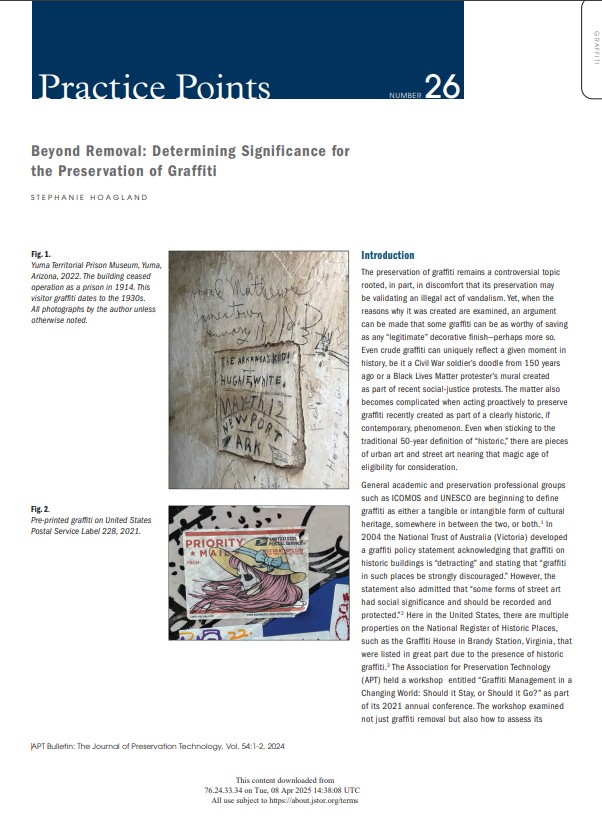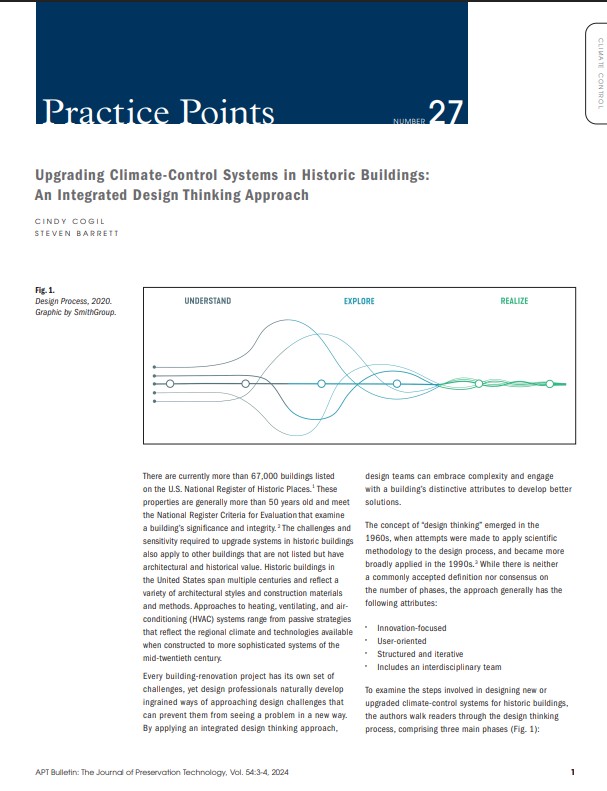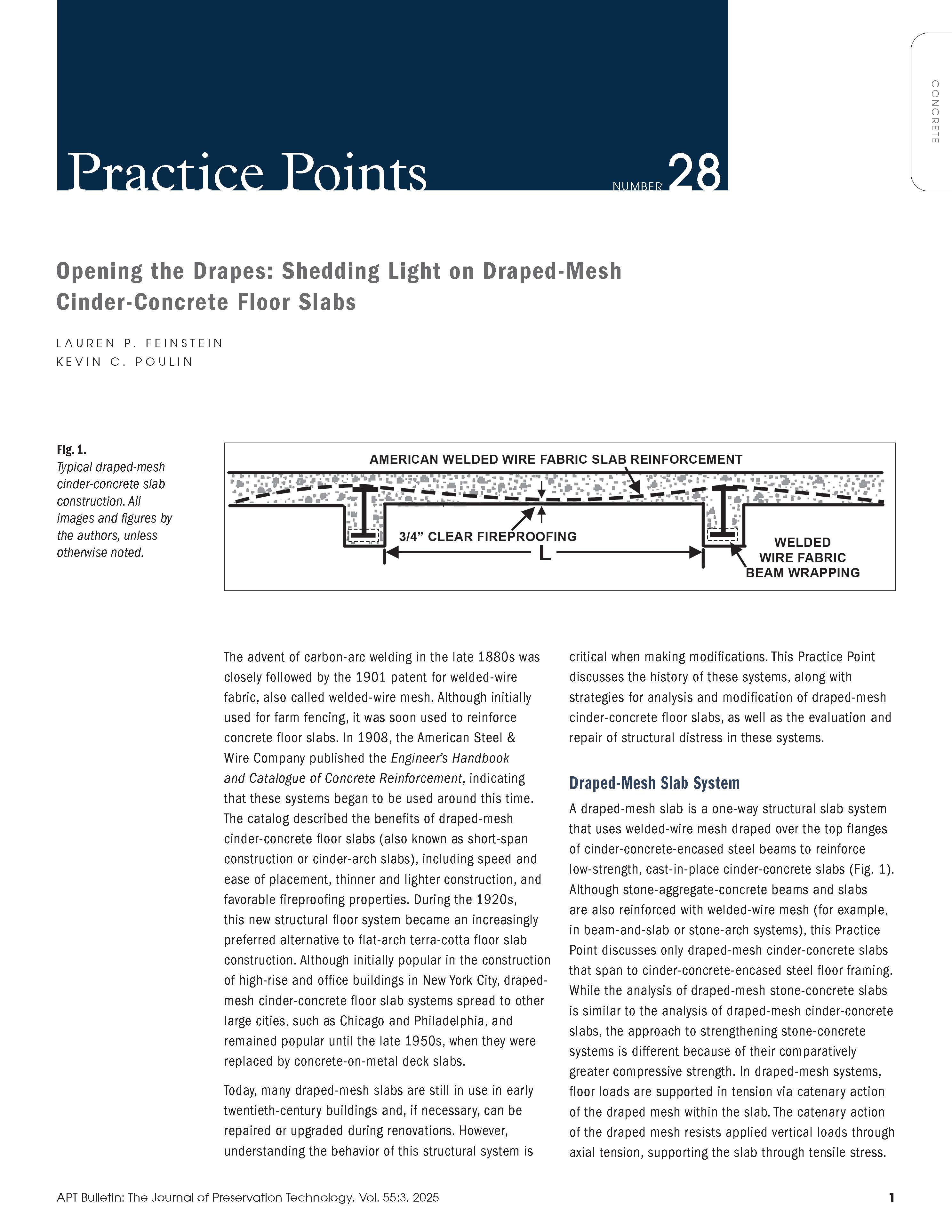|
In 2006, APT introduced Practice Points in the APT Bulletin as a way to share best practices in the field. Each column illustrates an existing or cutting-edge technology or technique in practice, shares original research in the history of building technology and materials, or presents recent case studies in which new technologies and techniques have been used successfully. Practice Points is designed to provide the most up-to-date, nuts-and-bolts information for practitioners and their clients.
APT invites members and non-members to submit manuscripts for Practice Points columns to the editor of the APT Bulletin. Like other articles in the Bulletin, Practice Points undergo peer review. Topics for Practice Points columns have included analysis of historic wood framing, paint analysis, mortar analysis, and non-destructive evaluation of masonry.
Practice Points submissions should be 1,000 to 4,000 words in length and should be accompanied by 3 to 8 illustrations. Please consult the Practice Points author guidelines and the guidelines on what constitutes previously published content for more information on acceptable formats for illustrations and editorial style.
Contact the Practice Points editors at [email protected].
Practice Points Archive
#28 Opening the Drapes: Shedding Light on Draped-Mesh Cinder-Concrete Floor Slabs
#27 Upgrading Climate-Control Systems in Historic Buildings: An Integrated Design Thinking Approach
#26 Beyond Removal: Determining Significance for the Preservation of Graffiti
#25 Metals for Historic Roofing: An Update
#24 Versatility in Design: History, Installation, Assessment, and Repair of Terrazzo
#23 Fire-Safety Approaches for Historic Buildings in the United States
#22 Analysis of Segmental and Semicircular Masonry Arches
#21 Specifying Mortars under ASTM C1713: Standard Specification for Mortars for the Repair of Historic Masonry
#20 Introduction to Mid-Range Terrestrial Laser Scanning
#19 Structural Hollow-Tile Flat-Arch Assemblies: A Guide for Assessment and Repair
#18 Classical Structural Analysis Methods for Historic Structures
#17 A Road Map to Structural Alterations in the International Existing Building Code
#16 Assessment of Historic Concrete Structures
#16 Evaluación de Esttructures Históricas de Concreto
#15 Architectural Terra Cotta
#14 Wood Preservatives and Pressure-treated Wood: Considerations for Historic-preservation Projects
#13 Data Interpretation and Early Corrosion Test Program for Historic Concrete Buildings
#12 Conditions Glossaries as a Tool in the Survey Process: A Review of Several Glossaries
#11 Mortar Analysis Part 3: Buying the Right Services
#10 Nondestructive Evaluation: Wood
#9 Nondestructive Evaluation: Structural Performance of Masonry
#8 Using Dry Ice for Spray-Paint Removal on Weathering Steel
#7 Mortar Analysis Part 2: Analytical Methods
#6 Architectural Finishes: Research and Analysis
#5 Mortar Analysis Part 1: Mortar-Making Materials
#4 Through a Lens Clearly: Instrumental Analysis as Applied to Architectural Materials
#3 Basics of Wood Inspection: Considerations for Historic Preservation
#2 The Metropolitan Floor: Modern Analysis of an Archaic Structure
#1 Successful Preservation Implementation: A Planned Approach to Risk Management
|



